-
FACTOR ANALYSIS
-
\r\n\r\n\r\nValue chain Analysis
-
\r\n\r\n\r\nPorter's
-
Five Forces Analysis
-
\r\n\r\n\r\nBargaining Power of Suppliers
-
\r\n\r\n\r\nBargaining
-
Power of Buyers
-
\r\n\r\n\r\nThreat of New Entrants
-
\r\n\r\n\r\nThreat
-
of Substitutes
-
\r\n\r\n\r\nIntensity of Rivalry
-
\r\n\r\n\r\n\r\n\r\nCOVID-19
-
Impact Analysis
-
\r\n\r\n\r\nMarket Impact Analysis
-
\r\n\r\n\r\nRegional
-
Impact
-
\r\n\r\n\r\nOpportunity and Threat Analysis
-
\r\n\r\n\r\n\r\n\r\n\r\n\r\n
-
\r\n
-
\r\n\r\n\r\nTrauma
-
Fixation Devices Market, BY Application (USD Billion)
-
\r\n\r\n\r\nFracture
-
Fixation
-
\r\n\r\n\r\nJoint Reconstruction
-
\r\n\r\n\r\nSpinal
-
Surgery
-
\r\n\r\n\r\nCranio-Maxillofacial Surgery
-
\r\n\r\n\r\n\r\n\r\nTrauma
-
Fixation Devices Market, BY Device Type (USD Billion)
-
\r\n\r\n\r\nInternal
-
Fixation Devices
-
\r\n\r\n\r\nExternal Fixation Devices
-
\r\n\r\n\r\nIntramedullary
-
Nails
-
\r\n\r\n\r\nPlates and Screws
-
\r\n\r\n\r\n\r\n\r\nTrauma
-
Fixation Devices Market, BY End Use (USD Billion)
-
\r\n\r\n\r\nHospitals
-
\r\n\r\n\r\nAmbulatory
-
Surgical Centers
-
\r\n\r\n\r\nOrthopedic Clinics
-
\r\n\r\n\r\n\r\n\r\nTrauma
-
Fixation Devices Market, BY Material (USD Billion)
-
\r\n\r\n\r\nMetal
-
\r\n\r\n\r\nPlastic
-
\r\n\r\n\r\nBio-absorbable
-
\r\n\r\n\r\n\r\n\r\nTrauma
-
Fixation Devices Market, BY Regional (USD Billion)
-
\r\n\r\n\r\nNorth
-
America
-
\r\n\r\n\r\nUS
-
\r\n\r\n\r\nCanada
-
\r\n\r\n\r\n\r\n\r\nEurope
-
\r\n\r\n\r\nGermany
-
\r\n\r\n\r\nUK
-
\r\n\r\n\r\nFrance
-
\r\n\r\n\r\nRussia
-
\r\n\r\n\r\nItaly
-
\r\n\r\n\r\nSpain
-
\r\n\r\n\r\nRest
-
of Europe
-
\r\n\r\n\r\n\r\n\r\nAPAC
-
\r\n\r\n\r\nChina
-
\r\n\r\n\r\nIndia
-
\r\n\r\n\r\nJapan
-
\r\n\r\n\r\nSouth
-
Korea
-
\r\n\r\n\r\nMalaysia
-
\r\n\r\n\r\nThailand
-
\r\n\r\n\r\nIndonesia
-
\r\n\r\n\r\nRest
-
of APAC
-
\r\n\r\n\r\n\r\n\r\nSouth America
-
\r\n\r\n\r\nBrazil
-
\r\n\r\n\r\nMexico
-
\r\n\r\n\r\nArgentina
-
\r\n\r\n\r\nRest
-
of South America
-
\r\n\r\n\r\n\r\n\r\nMEA
-
\r\n\r\n\r\nGCC
-
Countries
-
\r\n\r\n\r\nSouth Africa
-
\r\n\r\n\r\nRest
-
of MEA
-
\r\n\r\n\r\n\r\n\r\n\r\n\r\n
-
\r\n
-
\r\n\r\n\r\nCompetitive
-
Landscape
-
\r\n\r\n\r\nOverview
-
\r\n\r\n\r\nCompetitive
-
Analysis
-
\r\n\r\n\r\nMarket share Analysis
-
\r\n\r\n\r\nMajor
-
Growth Strategy in the Trauma Fixation Devices Market
-
\r\n\r\n\r\nCompetitive
-
Benchmarking
-
\r\n\r\n\r\nLeading Players in Terms of Number of Developments
-
in the Trauma Fixation Devices Market
-
\r\n\r\n\r\nKey developments
-
and growth strategies
-
\r\n\r\n\r\nNew Product Launch/Service Deployment
-
\r\n\r\n\r\nMerger
-
& Acquisitions
-
\r\n\r\n\r\nJoint Ventures
-
\r\n\r\n\r\n\r\n\r\nMajor
-
Players Financial Matrix
-
\r\n\r\n\r\nSales and Operating Income
-
\r\n\r\n\r\nMajor
-
Players R&D Expenditure. 2023
-
\r\n\r\n\r\n\r\n\r\n\r\n\r\nCompany
-
Profiles
-
\r\n\r\n\r\nConmed
-
\r\n\r\n\r\nFinancial
-
Overview
-
\r\n\r\n\r\nProducts Offered
-
\r\n\r\n\r\nKey
-
Developments
-
\r\n\r\n\r\nSWOT Analysis
-
\r\n\r\n\r\nKey
-
Strategies
-
\r\n\r\n\r\n\r\n\r\nZimmer Biomet
-
\r\n\r\n\r\nFinancial
-
Overview
-
\r\n\r\n\r\nProducts Offered
-
\r\n\r\n\r\nKey
-
Developments
-
\r\n\r\n\r\nSWOT Analysis
-
\r\n\r\n\r\nKey
-
Strategies
-
\r\n\r\n\r\n\r\n\r\nSmith and Nephew
-
\r\n\r\n\r\nFinancial
-
Overview
-
\r\n\r\n\r\nProducts Offered
-
\r\n\r\n\r\nKey
-
Developments
-
\r\n\r\n\r\nSWOT Analysis
-
\r\n\r\n\r\nKey
-
Strategies
-
\r\n\r\n\r\n\r\n\r\nDePuy Synthes
-
\r\n\r\n\r\nFinancial
-
Overview
-
\r\n\r\n\r\nProducts Offered
-
\r\n\r\n\r\nKey
-
Developments
-
\r\n\r\n\r\nSWOT Analysis
-
\r\n\r\n\r\nKey
-
Strategies
-
\r\n\r\n\r\n\r\n\r\nArthrex
-
\r\n\r\n\r\nFinancial
-
Overview
-
\r\n\r\n\r\nProducts Offered
-
\r\n\r\n\r\nKey
-
Developments
-
\r\n\r\n\r\nSWOT Analysis
-
\r\n\r\n\r\nKey
-
Strategies
-
\r\n\r\n\r\n\r\n\r\nIntegra LifeSciences
-
\r\n\r\n\r\nFinancial
-
Overview
-
\r\n\r\n\r\nProducts Offered
-
\r\n\r\n\r\nKey
-
Developments
-
\r\n\r\n\r\nSWOT Analysis
-
\r\n\r\n\r\nKey
-
Strategies
-
\r\n\r\n\r\n\r\n\r\nOrthofix
-
\r\n\r\n\r\nFinancial
-
Overview
-
\r\n\r\n\r\nProducts Offered
-
\r\n\r\n\r\nKey
-
Developments
-
\r\n\r\n\r\nSWOT Analysis
-
\r\n\r\n\r\nKey
-
Strategies
-
\r\n\r\n\r\n\r\n\r\nJohnson and Johnson
-
\r\n\r\n\r\nFinancial
-
Overview
-
\r\n\r\n\r\nProducts Offered
-
\r\n\r\n\r\nKey
-
Developments
-
\r\n\r\n\r\nSWOT Analysis
-
\r\n\r\n\r\nKey
-
Strategies
-
\r\n\r\n\r\n\r\n\r\nStryker
-
\r\n\r\n\r\nFinancial
-
Overview
-
\r\n\r\n\r\nProducts Offered
-
\r\n\r\n\r\nKey
-
Developments
-
\r\n\r\n\r\nSWOT Analysis
-
\r\n\r\n\r\nKey
-
Strategies
-
\r\n\r\n\r\n\r\n\r\nNuVasive
-
\r\n\r\n\r\nFinancial
-
Overview
-
\r\n\r\n\r\nProducts Offered
-
\r\n\r\n\r\nKey
-
Developments
-
\r\n\r\n\r\nSWOT Analysis
-
\r\n\r\n\r\nKey
-
Strategies
-
\r\n\r\n\r\n\r\n\r\nMedtronic
-
\r\n\r\n\r\nFinancial
-
Overview
-
\r\n\r\n\r\nProducts Offered
-
\r\n\r\n\r\nKey
-
Developments
-
\r\n\r\n\r\nSWOT Analysis
-
\r\n\r\n\r\nKey
-
Strategies
-
\r\n\r\n\r\n\r\n\r\nB. Braun
-
\r\n\r\n\r\nFinancial
-
Overview
-
\r\n\r\n\r\nProducts Offered
-
\r\n\r\n\r\nKey
-
Developments
-
\r\n\r\n\r\nSWOT Analysis
-
\r\n\r\n\r\nKey
-
Strategies
-
\r\n\r\n\r\n\r\n\r\nMediCorner
-
\r\n\r\n\r\nFinancial
-
Overview
-
\r\n\r\n\r\nProducts Offered
-
\r\n\r\n\r\nKey
-
Developments
-
\r\n\r\n\r\nSWOT Analysis
-
\r\n\r\n\r\nKey
-
Strategies
-
\r\n\r\n\r\n\r\n\r\nAesculap
-
\r\n\r\n\r\nFinancial
-
Overview
-
\r\n\r\n\r\nProducts Offered
-
\r\n\r\n\r\nKey
-
Developments
-
\r\n\r\n\r\nSWOT Analysis
-
\r\n\r\n\r\nKey
-
Strategies
-
\r\n\r\n\r\n\r\n\r\nTornier
-
\r\n\r\n\r\nFinancial
-
Overview
-
\r\n\r\n\r\nProducts Offered
-
\r\n\r\n\r\nKey
-
Developments
-
\r\n\r\n\r\nSWOT Analysis
-
\r\n\r\n\r\nKey
-
Strategies
-
\r\n\r\n\r\n\r\n\r\n\r\n\r\nAppendix
-
\r\n\r\n\r\nReferences
-
\r\n\r\n\r\nRelated
-
Reports
-
\r\n\r\n\r\n\r\n\r\nLIST Of tables
-
\r\n
-
\r\n\r\n\r\nLIST
-
OF ASSUMPTIONS
-
\r\n\r\n\r\nNorth America Trauma Fixation Devices
-
Market SIZE ESTIMATES & FORECAST, BY APPLICATION, 2019-2035 (USD Billions)
-
\r\n\r\n\r\nNorth
-
America Trauma Fixation Devices Market SIZE ESTIMATES & FORECAST, BY DEVICE
-
TYPE, 2019-2035 (USD Billions)
-
\r\n\r\n\r\nNorth America Trauma Fixation
-
Devices Market SIZE ESTIMATES & FORECAST, BY END USE, 2019-2035 (USD Billions)
-
\r\n\r\n\r\nNorth
-
America Trauma Fixation Devices Market SIZE ESTIMATES & FORECAST, BY MATERIAL,
-
\r\n\r\n\r\nNorth America Trauma Fixation
-
Devices Market SIZE ESTIMATES & FORECAST, BY REGIONAL, 2019-2035 (USD Billions)
-
\r\n\r\n\r\nUS
-
Trauma Fixation Devices Market SIZE ESTIMATES & FORECAST, BY APPLICATION, 2019-2035
-
(USD Billions)
-
\r\n\r\n\r\nUS Trauma Fixation Devices Market SIZE
-
ESTIMATES & FORECAST, BY DEVICE TYPE, 2019-2035 (USD Billions)
-
\r\n\r\n\r\nUS
-
Trauma Fixation Devices Market SIZE ESTIMATES & FORECAST, BY END USE, 2019-2035
-
(USD Billions)
-
\r\n\r\n\r\nUS Trauma Fixation Devices Market SIZE
-
ESTIMATES & FORECAST, BY MATERIAL, 2019-2035 (USD Billions)
-
\r\n\r\n\r\nUS
-
Trauma Fixation Devices Market SIZE ESTIMATES & FORECAST, BY REGIONAL, 2019-2035
-
(USD Billions)
-
\r\n\r\n\r\nCanada Trauma Fixation Devices Market
-
SIZE ESTIMATES & FORECAST, BY APPLICATION, 2019-2035 (USD Billions)
-
\r\n\r\n\r\nCanada
-
Trauma Fixation Devices Market SIZE ESTIMATES & FORECAST, BY DEVICE TYPE, 2019-2035
-
(USD Billions)
-
\r\n\r\n\r\nCanada Trauma Fixation Devices Market
-
SIZE ESTIMATES & FORECAST, BY END USE, 2019-2035 (USD Billions)
-
\r\n\r\n\r\nCanada
-
Trauma Fixation Devices Market SIZE ESTIMATES & FORECAST, BY MATERIAL, 2019-2035
-
(USD Billions)
-
\r\n\r\n\r\nCanada Trauma Fixation Devices Market
-
SIZE ESTIMATES & FORECAST, BY REGIONAL, 2019-2035 (USD Billions)
-
\r\n\r\n\r\nEurope
-
Trauma Fixation Devices Market SIZE ESTIMATES & FORECAST, BY APPLICATION, 2019-2035
-
(USD Billions)
-
\r\n\r\n\r\nEurope Trauma Fixation Devices Market
-
SIZE ESTIMATES & FORECAST, BY DEVICE TYPE, 2019-2035 (USD Billions)
-
\r\n\r\n\r\nEurope
-
Trauma Fixation Devices Market SIZE ESTIMATES & FORECAST, BY END USE, 2019-2035
-
(USD Billions)
-
\r\n\r\n\r\nEurope Trauma Fixation Devices Market
-
SIZE ESTIMATES & FORECAST, BY MATERIAL, 2019-2035 (USD Billions)
-
\r\n\r\n\r\nEurope
-
Trauma Fixation Devices Market SIZE ESTIMATES & FORECAST, BY REGIONAL, 2019-2035
-
(USD Billions)
-
\r\n\r\n\r\nGermany Trauma Fixation Devices Market
-
SIZE ESTIMATES & FORECAST, BY APPLICATION, 2019-2035 (USD Billions)
-
\r\n\r\n\r\nGermany
-
Trauma Fixation Devices Market SIZE ESTIMATES & FORECAST, BY DEVICE TYPE, 2019-2035
-
(USD Billions)
-
\r\n\r\n\r\nGermany Trauma Fixation Devices Market
-
SIZE ESTIMATES & FORECAST, BY END USE, 2019-2035 (USD Billions)
-
\r\n\r\n\r\nGermany
-
Trauma Fixation Devices Market SIZE ESTIMATES & FORECAST, BY MATERIAL, 2019-2035
-
(USD Billions)
-
\r\n\r\n\r\nGermany Trauma Fixation Devices Market
-
SIZE ESTIMATES & FORECAST, BY REGIONAL, 2019-2035 (USD Billions)
-
\r\n\r\n\r\nUK
-
Trauma Fixation Devices Market SIZE ESTIMATES & FORECAST, BY APPLICATION, 2019-2035
-
(USD Billions)
-
\r\n\r\n\r\nUK Trauma Fixation Devices Market SIZE
-
ESTIMATES & FORECAST, BY DEVICE TYPE, 2019-2035 (USD Billions)
-
\r\n\r\n\r\nUK
-
Trauma Fixation Devices Market SIZE ESTIMATES & FORECAST, BY END USE, 2019-2035
-
(USD Billions)
-
\r\n\r\n\r\nUK Trauma Fixation Devices Market SIZE
-
ESTIMATES & FORECAST, BY MATERIAL, 2019-2035 (USD Billions)
-
\r\n\r\n\r\nUK
-
Trauma Fixation Devices Market SIZE ESTIMATES & FORECAST, BY REGIONAL, 2019-2035
-
(USD Billions)
-
\r\n\r\n\r\nFrance Trauma Fixation Devices Market
-
SIZE ESTIMATES & FORECAST, BY APPLICATION, 2019-2035 (USD Billions)
-
\r\n\r\n\r\nFrance
-
Trauma Fixation Devices Market SIZE ESTIMATES & FORECAST, BY DEVICE TYPE, 2019-2035
-
(USD Billions)
-
\r\n\r\n\r\nFrance Trauma Fixation Devices Market
-
SIZE ESTIMATES & FORECAST, BY END USE, 2019-2035 (USD Billions)
-
\r\n\r\n\r\nFrance
-
Trauma Fixation Devices Market SIZE ESTIMATES & FORECAST, BY MATERIAL, 2019-2035
-
(USD Billions)
-
\r\n\r\n\r\nFrance Trauma Fixation Devices Market
-
SIZE ESTIMATES & FORECAST, BY REGIONAL, 2019-2035 (USD Billions)
-
\r\n\r\n\r\nRussia
-
Trauma Fixation Devices Market SIZE ESTIMATES & FORECAST, BY APPLICATION, 2019-2035
-
(USD Billions)
-
\r\n\r\n\r\nRussia Trauma Fixation Devices Market
-
SIZE ESTIMATES & FORECAST, BY DEVICE TYPE, 2019-2035 (USD Billions)
-
\r\n\r\n\r\nRussia
-
Trauma Fixation Devices Market SIZE ESTIMATES & FORECAST, BY END USE, 2019-2035
-
(USD Billions)
-
\r\n\r\n\r\nRussia Trauma Fixation Devices Market
-
SIZE ESTIMATES & FORECAST, BY MATERIAL, 2019-2035 (USD Billions)
-
\r\n\r\n\r\nRussia
-
Trauma Fixation Devices Market SIZE ESTIMATES & FORECAST, BY REGIONAL, 2019-2035
-
(USD Billions)
-
\r\n\r\n\r\nItaly Trauma Fixation Devices Market SIZE
-
ESTIMATES & FORECAST, BY APPLICATION, 2019-2035 (USD Billions)
-
\r\n\r\n\r\nItaly
-
Trauma Fixation Devices Market SIZE ESTIMATES & FORECAST, BY DEVICE TYPE, 2019-2035
-
(USD Billions)
-
\r\n\r\n\r\nItaly Trauma Fixation Devices Market SIZE
-
ESTIMATES & FORECAST, BY END USE, 2019-2035 (USD Billions)
-
\r\n\r\n\r\nItaly
-
Trauma Fixation Devices Market SIZE ESTIMATES & FORECAST, BY MATERIAL, 2019-2035
-
(USD Billions)
-
\r\n\r\n\r\nItaly Trauma Fixation Devices Market SIZE
-
ESTIMATES & FORECAST, BY REGIONAL, 2019-2035 (USD Billions)
-
\r\n\r\n\r\nSpain
-
Trauma Fixation Devices Market SIZE ESTIMATES & FORECAST, BY APPLICATION, 2019-2035
-
(USD Billions)
-
\r\n\r\n\r\nSpain Trauma Fixation Devices Market SIZE
-
ESTIMATES & FORECAST, BY DEVICE TYPE, 2019-2035 (USD Billions)
-
\r\n\r\n\r\nSpain
-
Trauma Fixation Devices Market SIZE ESTIMATES & FORECAST, BY END USE, 2019-2035
-
(USD Billions)
-
\r\n\r\n\r\nSpain Trauma Fixation Devices Market SIZE
-
ESTIMATES & FORECAST, BY MATERIAL, 2019-2035 (USD Billions)
-
\r\n\r\n\r\nSpain
-
Trauma Fixation Devices Market SIZE ESTIMATES & FORECAST, BY REGIONAL, 2019-2035
-
(USD Billions)
-
\r\n\r\n\r\nRest of Europe Trauma Fixation Devices
-
Market SIZE ESTIMATES & FORECAST, BY APPLICATION, 2019-2035 (USD Billions)
-
\r\n\r\n\r\nRest
-
of Europe Trauma Fixation Devices Market SIZE ESTIMATES & FORECAST, BY DEVICE
-
TYPE, 2019-2035 (USD Billions)
-
\r\n\r\n\r\nRest of Europe Trauma
-
Fixation Devices Market SIZE ESTIMATES & FORECAST, BY END USE, 2019-2035 (USD
-
Billions)
-
\r\n\r\n\r\nRest of Europe Trauma Fixation Devices Market
-
SIZE ESTIMATES & FORECAST, BY MATERIAL, 2019-2035 (USD Billions)
-
\r\n\r\n\r\nRest
-
of Europe Trauma Fixation Devices Market SIZE ESTIMATES & FORECAST, BY REGIONAL,
-
\r\n\r\n\r\nAPAC Trauma Fixation Devices
-
Market SIZE ESTIMATES & FORECAST, BY APPLICATION, 2019-2035 (USD Billions)
-
\r\n\r\n\r\nAPAC
-
Trauma Fixation Devices Market SIZE ESTIMATES & FORECAST, BY DEVICE TYPE, 2019-2035
-
(USD Billions)
-
\r\n\r\n\r\nAPAC Trauma Fixation Devices Market SIZE
-
ESTIMATES & FORECAST, BY END USE, 2019-2035 (USD Billions)
-
\r\n\r\n\r\nAPAC
-
Trauma Fixation Devices Market SIZE ESTIMATES & FORECAST, BY MATERIAL, 2019-2035
-
(USD Billions)
-
\r\n\r\n\r\nAPAC Trauma Fixation Devices Market SIZE
-
ESTIMATES & FORECAST, BY REGIONAL, 2019-2035 (USD Billions)
-
\r\n\r\n\r\nChina
-
Trauma Fixation Devices Market SIZE ESTIMATES & FORECAST, BY APPLICATION, 2019-2035
-
(USD Billions)
-
\r\n\r\n\r\nChina Trauma Fixation Devices Market SIZE
-
ESTIMATES & FORECAST, BY DEVICE TYPE, 2019-2035 (USD Billions)
-
\r\n\r\n\r\nChina
-
Trauma Fixation Devices Market SIZE ESTIMATES & FORECAST, BY END USE, 2019-2035
-
(USD Billions)
-
\r\n\r\n\r\nChina Trauma Fixation Devices Market SIZE
-
ESTIMATES & FORECAST, BY MATERIAL, 2019-2035 (USD Billions)
-
\r\n\r\n\r\nChina
-
Trauma Fixation Devices Market SIZE ESTIMATES & FORECAST, BY REGIONAL, 2019-2035
-
(USD Billions)
-
\r\n\r\n\r\nIndia Trauma Fixation Devices Market SIZE
-
ESTIMATES & FORECAST, BY APPLICATION, 2019-2035 (USD Billions)
-
\r\n\r\n\r\nIndia
-
Trauma Fixation Devices Market SIZE ESTIMATES & FORECAST, BY DEVICE TYPE, 2019-2035
-
(USD Billions)
-
\r\n\r\n\r\nIndia Trauma Fixation Devices Market SIZE
-
ESTIMATES & FORECAST, BY END USE, 2019-2035 (USD Billions)
-
\r\n\r\n\r\nIndia
-
Trauma Fixation Devices Market SIZE ESTIMATES & FORECAST, BY MATERIAL, 2019-2035
-
(USD Billions)
-
\r\n\r\n\r\nIndia Trauma Fixation Devices Market SIZE
-
ESTIMATES & FORECAST, BY REGIONAL, 2019-2035 (USD Billions)
-
\r\n\r\n\r\nJapan
-
Trauma Fixation Devices Market SIZE ESTIMATES & FORECAST, BY APPLICATION, 2019-2035
-
(USD Billions)
-
\r\n\r\n\r\nJapan Trauma Fixation Devices Market SIZE
-
ESTIMATES & FORECAST, BY DEVICE TYPE, 2019-2035 (USD Billions)
-
\r\n\r\n\r\nJapan
-
Trauma Fixation Devices Market SIZE ESTIMATES & FORECAST, BY END USE, 2019-2035
-
(USD Billions)
-
\r\n\r\n\r\nJapan Trauma Fixation Devices Market SIZE
-
ESTIMATES & FORECAST, BY MATERIAL, 2019-2035 (USD Billions)
-
\r\n\r\n\r\nJapan
-
Trauma Fixation Devices Market SIZE ESTIMATES & FORECAST, BY REGIONAL, 2019-2035
-
(USD Billions)
-
\r\n\r\n\r\nSouth Korea Trauma Fixation Devices Market
-
SIZE ESTIMATES & FORECAST, BY APPLICATION, 2019-2035 (USD Billions)
-
\r\n\r\n\r\nSouth
-
Korea Trauma Fixation Devices Market SIZE ESTIMATES & FORECAST, BY DEVICE TYPE,
-
\r\n\r\n\r\nSouth Korea Trauma Fixation
-
Devices Market SIZE ESTIMATES & FORECAST, BY END USE, 2019-2035 (USD Billions)
-
\r\n\r\n\r\nSouth
-
Korea Trauma Fixation Devices Market SIZE ESTIMATES & FORECAST, BY MATERIAL,
-
\r\n\r\n\r\nSouth Korea Trauma Fixation
-
Devices Market SIZE ESTIMATES & FORECAST, BY REGIONAL, 2019-2035 (USD Billions)
-
\r\n\r\n\r\nMalaysia
-
Trauma Fixation Devices Market SIZE ESTIMATES & FORECAST, BY APPLICATION, 2019-2035
-
(USD Billions)
-
\r\n\r\n\r\nMalaysia Trauma Fixation Devices Market
-
SIZE ESTIMATES & FORECAST, BY DEVICE TYPE, 2019-2035 (USD Billions)
-
\r\n\r\n\r\nMalaysia
-
Trauma Fixation Devices Market SIZE ESTIMATES & FORECAST, BY END USE, 2019-2035
-
(USD Billions)
-
\r\n\r\n\r\nMalaysia Trauma Fixation Devices Market
-
SIZE ESTIMATES & FORECAST, BY MATERIAL, 2019-2035 (USD Billions)
-
\r\n\r\n\r\nMalaysia
-
Trauma Fixation Devices Market SIZE ESTIMATES & FORECAST, BY REGIONAL, 2019-2035
-
(USD Billions)
-
\r\n\r\n\r\nThailand Trauma Fixation Devices Market
-
SIZE ESTIMATES & FORECAST, BY APPLICATION, 2019-2035 (USD Billions)
-
\r\n\r\n\r\nThailand
-
Trauma Fixation Devices Market SIZE ESTIMATES & FORECAST, BY DEVICE TYPE, 2019-2035
-
(USD Billions)
-
\r\n\r\n\r\nThailand Trauma Fixation Devices Market
-
SIZE ESTIMATES & FORECAST, BY END USE, 2019-2035 (USD Billions)
-
\r\n\r\n\r\nThailand
-
Trauma Fixation Devices Market SIZE ESTIMATES & FORECAST, BY MATERIAL, 2019-2035
-
(USD Billions)
-
\r\n\r\n\r\nThailand Trauma Fixation Devices Market
-
SIZE ESTIMATES & FORECAST, BY REGIONAL, 2019-2035 (USD Billions)
-
\r\n\r\n\r\nIndonesia
-
Trauma Fixation Devices Market SIZE ESTIMATES & FORECAST, BY APPLICATION, 2019-2035
-
(USD Billions)
-
\r\n\r\n\r\nIndonesia Trauma Fixation Devices Market
-
SIZE ESTIMATES & FORECAST, BY DEVICE TYPE, 2019-2035 (USD Billions)
-
\r\n\r\n\r\nIndonesia
-
Trauma Fixation Devices Market SIZE ESTIMATES & FORECAST, BY END USE, 2019-2035
-
(USD Billions)
-
\r\n\r\n\r\nIndonesia Trauma Fixation Devices Market
-
SIZE ESTIMATES & FORECAST, BY MATERIAL, 2019-2035 (USD Billions)
-
\r\n\r\n\r\nIndonesia
-
Trauma Fixation Devices Market SIZE ESTIMATES & FORECAST, BY REGIONAL, 2019-2035
-
(USD Billions)
-
\r\n\r\n\r\nRest of APAC Trauma Fixation Devices Market
-
SIZE ESTIMATES & FORECAST, BY APPLICATION, 2019-2035 (USD Billions)
-
\r\n\r\n\r\nRest
-
of APAC Trauma Fixation Devices Market SIZE ESTIMATES & FORECAST, BY DEVICE
-
TYPE, 2019-2035 (USD Billions)
-
\r\n\r\n\r\nRest of APAC Trauma Fixation
-
Devices Market SIZE ESTIMATES & FORECAST, BY END USE, 2019-2035 (USD Billions)
-
\r\n\r\n\r\nRest
-
of APAC Trauma Fixation Devices Market SIZE ESTIMATES & FORECAST, BY MATERIAL,
-
\r\n\r\n\r\nRest of APAC Trauma Fixation
-
Devices Market SIZE ESTIMATES & FORECAST, BY REGIONAL, 2019-2035 (USD Billions)
-
\r\n\r\n\r\nSouth
-
America Trauma Fixation Devices Market SIZE ESTIMATES & FORECAST, BY APPLICATION,
-
\r\n\r\n\r\nSouth America Trauma Fixation
-
Devices Market SIZE ESTIMATES & FORECAST, BY DEVICE TYPE, 2019-2035 (USD Billions)
-
\r\n\r\n\r\nSouth
-
America Trauma Fixation Devices Market SIZE ESTIMATES & FORECAST, BY END USE,
-
\r\n\r\n\r\nSouth America Trauma Fixation
-
Devices Market SIZE ESTIMATES & FORECAST, BY MATERIAL, 2019-2035 (USD Billions)
-
\r\n\r\n\r\nSouth
-
America Trauma Fixation Devices Market SIZE ESTIMATES & FORECAST, BY REGIONAL,
-
\r\n\r\n\r\nBrazil Trauma Fixation Devices
-
Market SIZE ESTIMATES & FORECAST, BY APPLICATION, 2019-2035 (USD Billions)
-
\r\n\r\n\r\nBrazil
-
Trauma Fixation Devices Market SIZE ESTIMATES & FORECAST, BY DEVICE TYPE, 2019-2035
-
(USD Billions)
-
\r\n\r\n\r\nBrazil Trauma Fixation Devices Market
-
SIZE ESTIMATES & FORECAST, BY END USE, 2019-2035 (USD Billions)
-
\r\n\r\n\r\nBrazil
-
Trauma Fixation Devices Market SIZE ESTIMATES & FORECAST, BY MATERIAL, 2019-2035
-
(USD Billions)
-
\r\n\r\n\r\nBrazil Trauma Fixation Devices Market
-
SIZE ESTIMATES & FORECAST, BY REGIONAL, 2019-2035 (USD Billions)
-
\r\n\r\n\r\nMexico
-
Trauma Fixation Devices Market SIZE ESTIMATES & FORECAST, BY APPLICATION, 2019-2035
-
(USD Billions)
-
\r\n\r\n\r\nMexico Trauma Fixation Devices Market
-
SIZE ESTIMATES & FORECAST, BY DEVICE TYPE, 2019-2035 (USD Billions)
-
\r\n\r\n\r\nMexico
-
Trauma Fixation Devices Market SIZE ESTIMATES & FORECAST, BY END USE, 2019-2035
-
(USD Billions)
-
\r\n\r\n\r\nMexico Trauma Fixation Devices Market
-
SIZE ESTIMATES & FORECAST, BY MATERIAL, 2019-2035 (USD Billions)
-
\r\n\r\n\r\nMexico
-
Trauma Fixation Devices Market SIZE ESTIMATES & FORECAST, BY REGIONAL, 2019-2035
-
(USD Billions)
-
\r\n\r\n\r\nArgentina Trauma Fixation Devices Market
-
SIZE ESTIMATES & FORECAST, BY APPLICATION, 2019-2035 (USD Billions)
-
\r\n\r\n\r\nArgentina
-
Trauma Fixation Devices Market SIZE ESTIMATES & FORECAST, BY DEVICE TYPE, 2019-2035
-
(USD Billions)
-
\r\n\r\n\r\nArgentina Trauma Fixation Devices Market
-
SIZE ESTIMATES & FORECAST, BY END USE, 2019-2035 (USD Billions)
-
\r\n\r\n\r\nArgentina
-
Trauma Fixation Devices Market SIZE ESTIMATES & FORECAST, BY MATERIAL, 2019-2035
-
(USD Billions)
-
\r\n\r\n\r\nArgentina Trauma Fixation Devices Market
-
SIZE ESTIMATES & FORECAST, BY REGIONAL, 2019-2035 (USD Billions)
-
\r\n\r\n\r\nRest
-
of South America Trauma Fixation Devices Market SIZE ESTIMATES & FORECAST, BY
-
APPLICATION, 2019-2035 (USD Billions)
-
\r\n\r\n\r\nRest of South America
-
Trauma Fixation Devices Market SIZE ESTIMATES & FORECAST, BY DEVICE TYPE, 2019-2035
-
(USD Billions)
-
\r\n\r\n\r\nRest of South America Trauma Fixation
-
Devices Market SIZE ESTIMATES & FORECAST, BY END USE, 2019-2035 (USD Billions)
-
\r\n\r\n\r\nRest
-
of South America Trauma Fixation Devices Market SIZE ESTIMATES & FORECAST, BY
-
MATERIAL, 2019-2035 (USD Billions)
-
\r\n\r\n\r\nRest of South America
-
Trauma Fixation Devices Market SIZE ESTIMATES & FORECAST, BY REGIONAL, 2019-2035
-
(USD Billions)
-
\r\n\r\n\r\nMEA Trauma Fixation Devices Market SIZE
-
ESTIMATES & FORECAST, BY APPLICATION, 2019-2035 (USD Billions)
-
\r\n\r\n\r\nMEA
-
Trauma Fixation Devices Market SIZE ESTIMATES & FORECAST, BY DEVICE TYPE, 2019-2035
-
(USD Billions)
-
\r\n\r\n\r\nMEA Trauma Fixation Devices Market SIZE
-
ESTIMATES & FORECAST, BY END USE, 2019-2035 (USD Billions)
-
\r\n\r\n\r\nMEA
-
Trauma Fixation Devices Market SIZE ESTIMATES & FORECAST, BY MATERIAL, 2019-2035
-
(USD Billions)
-
\r\n\r\n\r\nMEA Trauma Fixation Devices Market SIZE
-
ESTIMATES & FORECAST, BY REGIONAL, 2019-2035 (USD Billions)
-
\r\n\r\n\r\nGCC
-
Countries Trauma Fixation Devices Market SIZE ESTIMATES & FORECAST, BY APPLICATION,
-
\r\n\r\n\r\nGCC Countries Trauma Fixation
-
Devices Market SIZE ESTIMATES & FORECAST, BY DEVICE TYPE, 2019-2035 (USD Billions)
-
\r\n\r\n\r\nGCC
-
Countries Trauma Fixation Devices Market SIZE ESTIMATES & FORECAST, BY END USE,
-
\r\n\r\n\r\nGCC Countries Trauma Fixation
-
Devices Market SIZE ESTIMATES & FORECAST, BY MATERIAL, 2019-2035 (USD Billions)
-
\r\n\r\n\r\nGCC
-
Countries Trauma Fixation Devices Market SIZE ESTIMATES & FORECAST, BY REGIONAL,
-
\r\n\r\n\r\nSouth Africa Trauma Fixation
-
Devices Market SIZE ESTIMATES & FORECAST, BY APPLICATION, 2019-2035 (USD Billions)
-
\r\n\r\n\r\nSouth
-
Africa Trauma Fixation Devices Market SIZE ESTIMATES & FORECAST, BY DEVICE TYPE,
-
\r\n\r\n\r\nSouth Africa Trauma Fixation
-
Devices Market SIZE ESTIMATES & FORECAST, BY END USE, 2019-2035 (USD Billions)
-
\r\n\r\n\r\nSouth
-
Africa Trauma Fixation Devices Market SIZE ESTIMATES & FORECAST, BY MATERIAL,
-
\r\n\r\n\r\nSouth Africa Trauma Fixation
-
Devices Market SIZE ESTIMATES & FORECAST, BY REGIONAL, 2019-2035 (USD Billions)
-
\r\n\r\n\r\nRest
-
of MEA Trauma Fixation Devices Market SIZE ESTIMATES & FORECAST, BY APPLICATION,
-
\r\n\r\n\r\nRest of MEA Trauma Fixation
-
Devices Market SIZE ESTIMATES & FORECAST, BY DEVICE TYPE, 2019-2035 (USD Billions)
-
\r\n\r\n\r\nRest
-
of MEA Trauma Fixation Devices Market SIZE ESTIMATES & FORECAST, BY END USE,
-
\r\n\r\n\r\nRest of MEA Trauma Fixation
-
Devices Market SIZE ESTIMATES & FORECAST, BY MATERIAL, 2019-2035 (USD Billions)
-
\r\n\r\n\r\nRest
-
of MEA Trauma Fixation Devices Market SIZE ESTIMATES & FORECAST, BY REGIONAL,
-
\r\n\r\n\r\nPRODUCT LAUNCH/PRODUCT DEVELOPMENT/APPROVAL
-
\r\n\r\n\r\nACQUISITION/PARTNERSHIP
-
\r\n\r\n\r\n
-
\r\n
-
\r\n
-
\r\n
-
\r\n
-
\r\n
-
\r\n
-
\r\n
-
\r\n
-
\r\n
-
\r\n
-
\r\n
-
\r\n
-
\r\n
-
\r\n
-
\r\n
-
\r\n
-
\r\n
-
\r\n
-
\r\n
-
\r\n
-
\r\n
-
\r\n
-
\r\n
-
\r\n
-
\r\n
-
\r\n
-
\r\n
-
\r\n
-
\r\nLIST
-
Of figures
-
\r\n
-
\r\n\r\n\r\nMARKET SYNOPSIS
-
\r\n\r\n\r\nNORTH
-
AMERICA TRAUMA FIXATION DEVICES MARKET ANALYSIS
-
\r\n\r\n\r\nUS TRAUMA
-
FIXATION DEVICES MARKET ANALYSIS BY APPLICATION
-
\r\n\r\n\r\nUS TRAUMA
-
FIXATION DEVICES MARKET ANALYSIS BY DEVICE TYPE
-
\r\n\r\n\r\nUS TRAUMA
-
FIXATION DEVICES MARKET ANALYSIS BY END USE
-
\r\n\r\n\r\nUS TRAUMA
-
FIXATION DEVICES MARKET ANALYSIS BY MATERIAL
-
\r\n\r\n\r\nUS TRAUMA
-
FIXATION DEVICES MARKET ANALYSIS BY REGIONAL
-
\r\n\r\n\r\nCANADA TRAUMA
-
FIXATION DEVICES MARKET ANALYSIS BY APPLICATION
-
\r\n\r\n\r\nCANADA
-
TRAUMA FIXATION DEVICES MARKET ANALYSIS BY DEVICE TYPE
-
\r\n\r\n\r\nCANADA
-
TRAUMA FIXATION DEVICES MARKET ANALYSIS BY END USE
-
\r\n\r\n\r\nCANADA
-
TRAUMA FIXATION DEVICES MARKET ANALYSIS BY MATERIAL
-
\r\n\r\n\r\nCANADA
-
TRAUMA FIXATION DEVICES MARKET ANALYSIS BY REGIONAL
-
\r\n\r\n\r\nEUROPE
-
TRAUMA FIXATION DEVICES MARKET ANALYSIS
-
\r\n\r\n\r\nGERMANY TRAUMA
-
FIXATION DEVICES MARKET ANALYSIS BY APPLICATION
-
\r\n\r\n\r\nGERMANY
-
TRAUMA FIXATION DEVICES MARKET ANALYSIS BY DEVICE TYPE
-
\r\n\r\n\r\nGERMANY
-
TRAUMA FIXATION DEVICES MARKET ANALYSIS BY END USE
-
\r\n\r\n\r\nGERMANY
-
TRAUMA FIXATION DEVICES MARKET ANALYSIS BY MATERIAL
-
\r\n\r\n\r\nGERMANY
-
TRAUMA FIXATION DEVICES MARKET ANALYSIS BY REGIONAL
-
\r\n\r\n\r\nUK
-
TRAUMA FIXATION DEVICES MARKET ANALYSIS BY APPLICATION
-
\r\n\r\n\r\nUK
-
TRAUMA FIXATION DEVICES MARKET ANALYSIS BY DEVICE TYPE
-
\r\n\r\n\r\nUK
-
TRAUMA FIXATION DEVICES MARKET ANALYSIS BY END USE
-
\r\n\r\n\r\nUK
-
TRAUMA FIXATION DEVICES MARKET ANALYSIS BY MATERIAL
-
\r\n\r\n\r\nUK
-
TRAUMA FIXATION DEVICES MARKET ANALYSIS BY REGIONAL
-
\r\n\r\n\r\nFRANCE
-
TRAUMA FIXATION DEVICES MARKET ANALYSIS BY APPLICATION
-
\r\n\r\n\r\nFRANCE
-
TRAUMA FIXATION DEVICES MARKET ANALYSIS BY DEVICE TYPE
-
\r\n\r\n\r\nFRANCE
-
TRAUMA FIXATION DEVICES MARKET ANALYSIS BY END USE
-
\r\n\r\n\r\nFRANCE
-
TRAUMA FIXATION DEVICES MARKET ANALYSIS BY MATERIAL
-
\r\n\r\n\r\nFRANCE
-
TRAUMA FIXATION DEVICES MARKET ANALYSIS BY REGIONAL
-
\r\n\r\n\r\nRUSSIA
-
TRAUMA FIXATION DEVICES MARKET ANALYSIS BY APPLICATION
-
\r\n\r\n\r\nRUSSIA
-
TRAUMA FIXATION DEVICES MARKET ANALYSIS BY DEVICE TYPE
-
\r\n\r\n\r\nRUSSIA
-
TRAUMA FIXATION DEVICES MARKET ANALYSIS BY END USE
-
\r\n\r\n\r\nRUSSIA
-
TRAUMA FIXATION DEVICES MARKET ANALYSIS BY MATERIAL
-
\r\n\r\n\r\nRUSSIA
-
TRAUMA FIXATION DEVICES MARKET ANALYSIS BY REGIONAL
-
\r\n\r\n\r\nITALY
-
TRAUMA FIXATION DEVICES MARKET ANALYSIS BY APPLICATION
-
\r\n\r\n\r\nITALY
-
TRAUMA FIXATION DEVICES MARKET ANALYSIS BY DEVICE TYPE
-
\r\n\r\n\r\nITALY
-
TRAUMA FIXATION DEVICES MARKET ANALYSIS BY END USE
-
\r\n\r\n\r\nITALY
-
TRAUMA FIXATION DEVICES MARKET ANALYSIS BY MATERIAL
-
\r\n\r\n\r\nITALY
-
TRAUMA FIXATION DEVICES MARKET ANALYSIS BY REGIONAL
-
\r\n\r\n\r\nSPAIN
-
TRAUMA FIXATION DEVICES MARKET ANALYSIS BY APPLICATION
-
\r\n\r\n\r\nSPAIN
-
TRAUMA FIXATION DEVICES MARKET ANALYSIS BY DEVICE TYPE
-
\r\n\r\n\r\nSPAIN
-
TRAUMA FIXATION DEVICES MARKET ANALYSIS BY END USE
-
\r\n\r\n\r\nSPAIN
-
TRAUMA FIXATION DEVICES MARKET ANALYSIS BY MATERIAL
-
\r\n\r\n\r\nSPAIN
-
TRAUMA FIXATION DEVICES MARKET ANALYSIS BY REGIONAL
-
\r\n\r\n\r\nREST
-
OF EUROPE TRAUMA FIXATION DEVICES MARKET ANALYSIS BY APPLICATION
-
\r\n\r\n\r\nREST
-
OF EUROPE TRAUMA FIXATION DEVICES MARKET ANALYSIS BY DEVICE TYPE
-
\r\n\r\n\r\nREST
-
OF EUROPE TRAUMA FIXATION DEVICES MARKET ANALYSIS BY END USE
-
\r\n\r\n\r\nREST
-
OF EUROPE TRAUMA FIXATION DEVICES MARKET ANALYSIS BY MATERIAL
-
\r\n\r\n\r\nREST
-
OF EUROPE TRAUMA FIXATION DEVICES MARKET ANALYSIS BY REGIONAL
-
\r\n\r\n\r\nAPAC
-
TRAUMA FIXATION DEVICES MARKET ANALYSIS
-
\r\n\r\n\r\nCHINA TRAUMA
-
FIXATION DEVICES MARKET ANALYSIS BY APPLICATION
-
\r\n\r\n\r\nCHINA
-
TRAUMA FIXATION DEVICES MARKET ANALYSIS BY DEVICE TYPE
-
\r\n\r\n\r\nCHINA
-
TRAUMA FIXATION DEVICES MARKET ANALYSIS BY END USE
-
\r\n\r\n\r\nCHINA
-
TRAUMA FIXATION DEVICES MARKET ANALYSIS BY MATERIAL
-
\r\n\r\n\r\nCHINA
-
TRAUMA FIXATION DEVICES MARKET ANALYSIS BY REGIONAL
-
\r\n\r\n\r\nINDIA
-
TRAUMA FIXATION DEVICES MARKET ANALYSIS BY APPLICATION
-
\r\n\r\n\r\nINDIA
-
TRAUMA FIXATION DEVICES MARKET ANALYSIS BY DEVICE TYPE
-
\r\n\r\n\r\nINDIA
-
TRAUMA FIXATION DEVICES MARKET ANALYSIS BY END USE
-
\r\n\r\n\r\nINDIA
-
TRAUMA FIXATION DEVICES MARKET ANALYSIS BY MATERIAL
-
\r\n\r\n\r\nINDIA
-
TRAUMA FIXATION DEVICES MARKET ANALYSIS BY REGIONAL
-
\r\n\r\n\r\nJAPAN
-
TRAUMA FIXATION DEVICES MARKET ANALYSIS BY APPLICATION
-
\r\n\r\n\r\nJAPAN
-
TRAUMA FIXATION DEVICES MARKET ANALYSIS BY DEVICE TYPE
-
\r\n\r\n\r\nJAPAN
-
TRAUMA FIXATION DEVICES MARKET ANALYSIS BY END USE
-
\r\n\r\n\r\nJAPAN
-
TRAUMA FIXATION DEVICES MARKET ANALYSIS BY MATERIAL
-
\r\n\r\n\r\nJAPAN
-
TRAUMA FIXATION DEVICES MARKET ANALYSIS BY REGIONAL
-
\r\n\r\n\r\nSOUTH
-
KOREA TRAUMA FIXATION DEVICES MARKET ANALYSIS BY APPLICATION
-
\r\n\r\n\r\nSOUTH
-
KOREA TRAUMA FIXATION DEVICES MARKET ANALYSIS BY DEVICE TYPE
-
\r\n\r\n\r\nSOUTH
-
KOREA TRAUMA FIXATION DEVICES MARKET ANALYSIS BY END USE
-
\r\n\r\n\r\nSOUTH
-
KOREA TRAUMA FIXATION DEVICES MARKET ANALYSIS BY MATERIAL
-
\r\n\r\n\r\nSOUTH
-
KOREA TRAUMA FIXATION DEVICES MARKET ANALYSIS BY REGIONAL
-
\r\n\r\n\r\nMALAYSIA
-
TRAUMA FIXATION DEVICES MARKET ANALYSIS BY APPLICATION
-
\r\n\r\n\r\nMALAYSIA
-
TRAUMA FIXATION DEVICES MARKET ANALYSIS BY DEVICE TYPE
-
\r\n\r\n\r\nMALAYSIA
-
TRAUMA FIXATION DEVICES MARKET ANALYSIS BY END USE
-
\r\n\r\n\r\nMALAYSIA
-
TRAUMA FIXATION DEVICES MARKET ANALYSIS BY MATERIAL
-
\r\n\r\n\r\nMALAYSIA
-
TRAUMA FIXATION DEVICES MARKET ANALYSIS BY REGIONAL
-
\r\n\r\n\r\nTHAILAND
-
TRAUMA FIXATION DEVICES MARKET ANALYSIS BY APPLICATION
-
\r\n\r\n\r\nTHAILAND
-
TRAUMA FIXATION DEVICES MARKET ANALYSIS BY DEVICE TYPE
-
\r\n\r\n\r\nTHAILAND
-
TRAUMA FIXATION DEVICES MARKET ANALYSIS BY END USE
-
\r\n\r\n\r\nTHAILAND
-
TRAUMA FIXATION DEVICES MARKET ANALYSIS BY MATERIAL
-
\r\n\r\n\r\nTHAILAND
-
TRAUMA FIXATION DEVICES MARKET ANALYSIS BY REGIONAL
-
\r\n\r\n\r\nINDONESIA
-
TRAUMA FIXATION DEVICES MARKET ANALYSIS BY APPLICATION
-
\r\n\r\n\r\nINDONESIA
-
TRAUMA FIXATION DEVICES MARKET ANALYSIS BY DEVICE TYPE
-
\r\n\r\n\r\nINDONESIA
-
TRAUMA FIXATION DEVICES MARKET ANALYSIS BY END USE
-
\r\n\r\n\r\nINDONESIA
-
TRAUMA FIXATION DEVICES MARKET ANALYSIS BY MATERIAL
-
\r\n\r\n\r\nINDONESIA
-
TRAUMA FIXATION DEVICES MARKET ANALYSIS BY REGIONAL
-
\r\n\r\n\r\nREST
-
OF APAC TRAUMA FIXATION DEVICES MARKET ANALYSIS BY APPLICATION
-
\r\n\r\n\r\nREST
-
OF APAC TRAUMA FIXATION DEVICES MARKET ANALYSIS BY DEVICE TYPE
-
\r\n\r\n\r\nREST
-
OF APAC TRAUMA FIXATION DEVICES MARKET ANALYSIS BY END USE
-
\r\n\r\n\r\nREST
-
OF APAC TRAUMA FIXATION DEVICES MARKET ANALYSIS BY MATERIAL
-
\r\n\r\n\r\nREST
-
OF APAC TRAUMA FIXATION DEVICES MARKET ANALYSIS BY REGIONAL
-
\r\n\r\n\r\nSOUTH
-
AMERICA TRAUMA FIXATION DEVICES MARKET ANALYSIS
-
\r\n\r\n\r\nBRAZIL
-
TRAUMA FIXATION DEVICES MARKET ANALYSIS BY APPLICATION
-
\r\n\r\n\r\nBRAZIL
-
TRAUMA FIXATION DEVICES MARKET ANALYSIS BY DEVICE TYPE
-
\r\n\r\n\r\nBRAZIL
-
TRAUMA FIXATION DEVICES MARKET ANALYSIS BY END USE
-
\r\n\r\n\r\nBRAZIL
-
TRAUMA FIXATION DEVICES MARKET ANALYSIS BY MATERIAL
-
\r\n\r\n\r\nBRAZIL
-
TRAUMA FIXATION DEVICES MARKET ANALYSIS BY REGIONAL
-
\r\n\r\n\r\nMEXICO
-
TRAUMA FIXATION DEVICES MARKET ANALYSIS BY APPLICATION
-
\r\n\r\n\r\nMEXICO
-
TRAUMA FIXATION DEVICES MARKET ANALYSIS BY DEVICE TYPE
-
\r\n\r\n\r\nMEXICO
-
TRAUMA FIXATION DEVICES MARKET ANALYSIS BY END USE
-
\r\n\r\n\r\nMEXICO
-
TRAUMA FIXATION DEVICES MARKET ANALYSIS BY MATERIAL
-
\r\n\r\n\r\nMEXICO
-
TRAUMA FIXATION DEVICES MARKET ANALYSIS BY REGIONAL
-
\r\n\r\n\r\nARGENTINA
-
TRAUMA FIXATION DEVICES MARKET ANALYSIS BY APPLICATION
-
\r\n\r\n\r\nARGENTINA
-
TRAUMA FIXATION DEVICES MARKET ANALYSIS BY DEVICE TYPE
-
\r\n\r\n\r\nARGENTINA
-
TRAUMA FIXATION DEVICES MARKET ANALYSIS BY END USE
-
\r\n\r\n\r\nARGENTINA
-
TRAUMA FIXATION DEVICES MARKET ANALYSIS BY MATERIAL
-
\r\n\r\n\r\nARGENTINA
-
TRAUMA FIXATION DEVICES MARKET ANALYSIS BY REGIONAL
-
\r\n\r\n\r\nREST
-
OF SOUTH AMERICA TRAUMA FIXATION DEVICES MARKET ANALYSIS BY APPLICATION
-
\r\n\r\n\r\nREST
-
OF SOUTH AMERICA TRAUMA FIXATION DEVICES MARKET ANALYSIS BY DEVICE TYPE
-
\r\n\r\n\r\nREST
-
OF SOUTH AMERICA TRAUMA FIXATION DEVICES MARKET ANALYSIS BY END USE
-
\r\n\r\n\r\nREST
-
OF SOUTH AMERICA TRAUMA FIXATION DEVICES MARKET ANALYSIS BY MATERIAL
-
\r\n\r\n\r\nREST
-
OF SOUTH AMERICA TRAUMA FIXATION DEVICES MARKET ANALYSIS BY REGIONAL
-
\r\n\r\n\r\nMEA
-
TRAUMA FIXATION DEVICES MARKET ANALYSIS
-
\r\n\r\n\r\nGCC COUNTRIES
-
TRAUMA FIXATION DEVICES MARKET ANALYSIS BY APPLICATION
-
\r\n\r\n\r\nGCC
-
COUNTRIES TRAUMA FIXATION DEVICES MARKET ANALYSIS BY DEVICE TYPE
-
\r\n\r\n\r\nGCC
-
COUNTRIES TRAUMA FIXATION DEVICES MARKET ANALYSIS BY END USE
-
\r\n\r\n\r\nGCC
-
COUNTRIES TRAUMA FIXATION DEVICES MARKET ANALYSIS BY MATERIAL
-
\r\n\r\n\r\nGCC
-
COUNTRIES TRAUMA FIXATION DEVICES MARKET ANALYSIS BY REGIONAL
-
\r\n\r\n\r\nSOUTH
-
AFRICA TRAUMA FIXATION DEVICES MARKET ANALYSIS BY APPLICATION
-
\r\n\r\n\r\nSOUTH
-
AFRICA TRAUMA FIXATION DEVICES MARKET ANALYSIS BY DEVICE TYPE
-
\r\n\r\n\r\nSOUTH
-
AFRICA TRAUMA FIXATION DEVICES MARKET ANALYSIS BY END USE
-
\r\n\r\n\r\nSOUTH
-
AFRICA TRAUMA FIXATION DEVICES MARKET ANALYSIS BY MATERIAL
-
\r\n\r\n\r\nSOUTH
-
AFRICA TRAUMA FIXATION DEVICES MARKET ANALYSIS BY REGIONAL
-
\r\n\r\n\r\nREST
-
OF MEA TRAUMA FIXATION DEVICES MARKET ANALYSIS BY APPLICATION
-
\r\n\r\n\r\nREST
-
OF MEA TRAUMA FIXATION DEVICES MARKET ANALYSIS BY DEVICE TYPE
-
\r\n\r\n\r\nREST
-
OF MEA TRAUMA FIXATION DEVICES MARKET ANALYSIS BY END USE
-
\r\n\r\n\r\nREST
-
OF MEA TRAUMA FIXATION DEVICES MARKET ANALYSIS BY MATERIAL
-
\r\n\r\n\r\nREST
-
OF MEA TRAUMA FIXATION DEVICES MARKET ANALYSIS BY REGIONAL
-
\r\n\r\n\r\nKEY
-
BUYING CRITERIA OF TRAUMA FIXATION DEVICES MARKET
-
\r\n\r\n\r\nRESEARCH
-
PROCESS OF MRFR
-
\r\n\r\n\r\nDRO ANALYSIS OF TRAUMA FIXATION DEVICES
-
MARKET
-
\r\n\r\n\r\nDRIVERS IMPACT ANALYSIS: TRAUMA FIXATION DEVICES
-
MARKET
-
\r\n\r\n\r\nRESTRAINTS IMPACT ANALYSIS: TRAUMA FIXATION DEVICES
-
MARKET
-
\r\n\r\n\r\nSUPPLY / VALUE CHAIN: TRAUMA FIXATION DEVICES
-
MARKET
-
\r\n\r\n\r\nTRAUMA FIXATION DEVICES MARKET, BY APPLICATION,
-
\r\n\r\n\r\nTRAUMA FIXATION DEVICES MARKET, BY APPLICATION,
-
\r\n\r\n\r\nTRAUMA FIXATION DEVICES MARKET,
-
BY DEVICE TYPE, 2025 (% SHARE)
-
\r\n\r\n\r\nTRAUMA FIXATION DEVICES
-
MARKET, BY DEVICE TYPE, 2019 TO 2035 (USD Billions)
-
\r\n\r\n\r\nTRAUMA
-
FIXATION DEVICES MARKET, BY END USE, 2025 (% SHARE)
-
\r\n\r\n\r\nTRAUMA
-
FIXATION DEVICES MARKET, BY END USE, 2019 TO 2035 (USD Billions)
-
\r\n\r\n\r\nTRAUMA
-
FIXATION DEVICES MARKET, BY MATERIAL, 2025 (% SHARE)
-
\r\n\r\n\r\nTRAUMA
-
FIXATION DEVICES MARKET, BY MATERIAL, 2019 TO 2035 (USD Billions)
-
\r\n\r\n\r\nTRAUMA
-
FIXATION DEVICES MARKET, BY REGIONAL, 2025 (% SHARE)
-
\r\n\r\n\r\nTRAUMA
-
FIXATION DEVICES MARKET, BY REGIONAL, 2019 TO 2035 (USD Billions)
-
\r\n\r\n\r\nBENCHMARKING
-
OF MAJOR COMPETITORS
-
\r\n\r\n\r\n

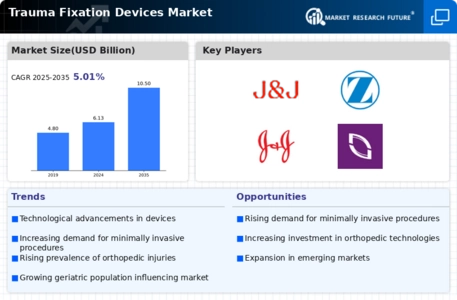

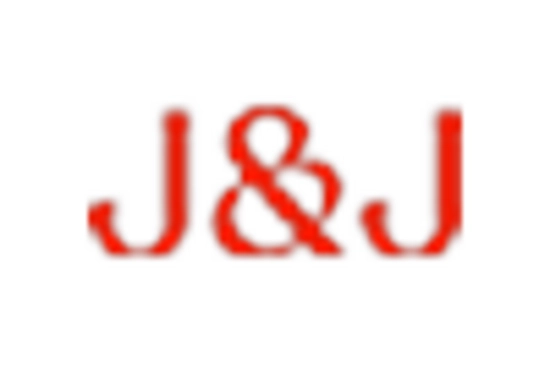
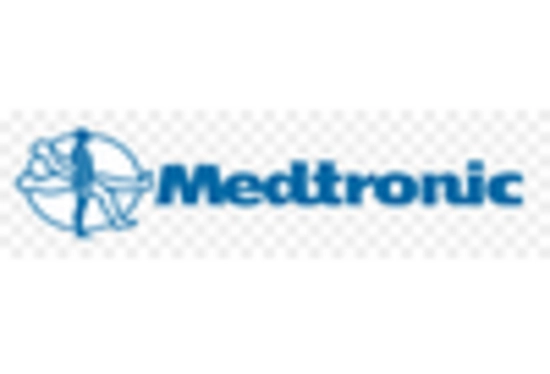

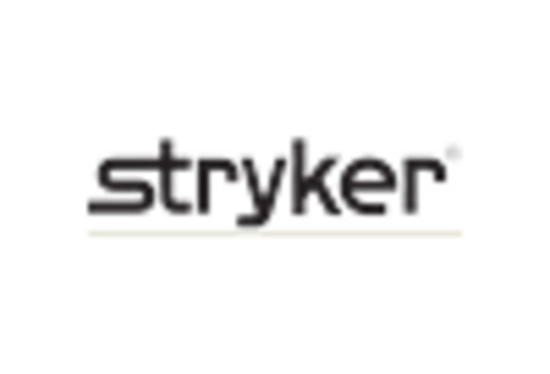
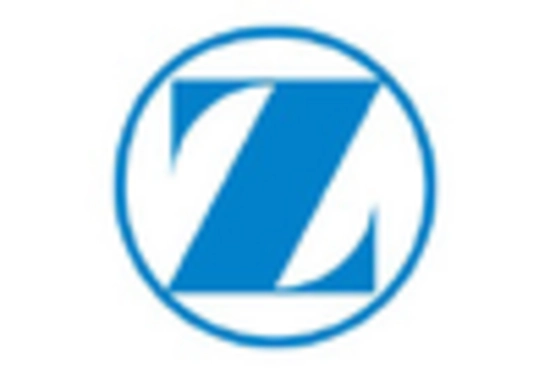

Leave a Comment